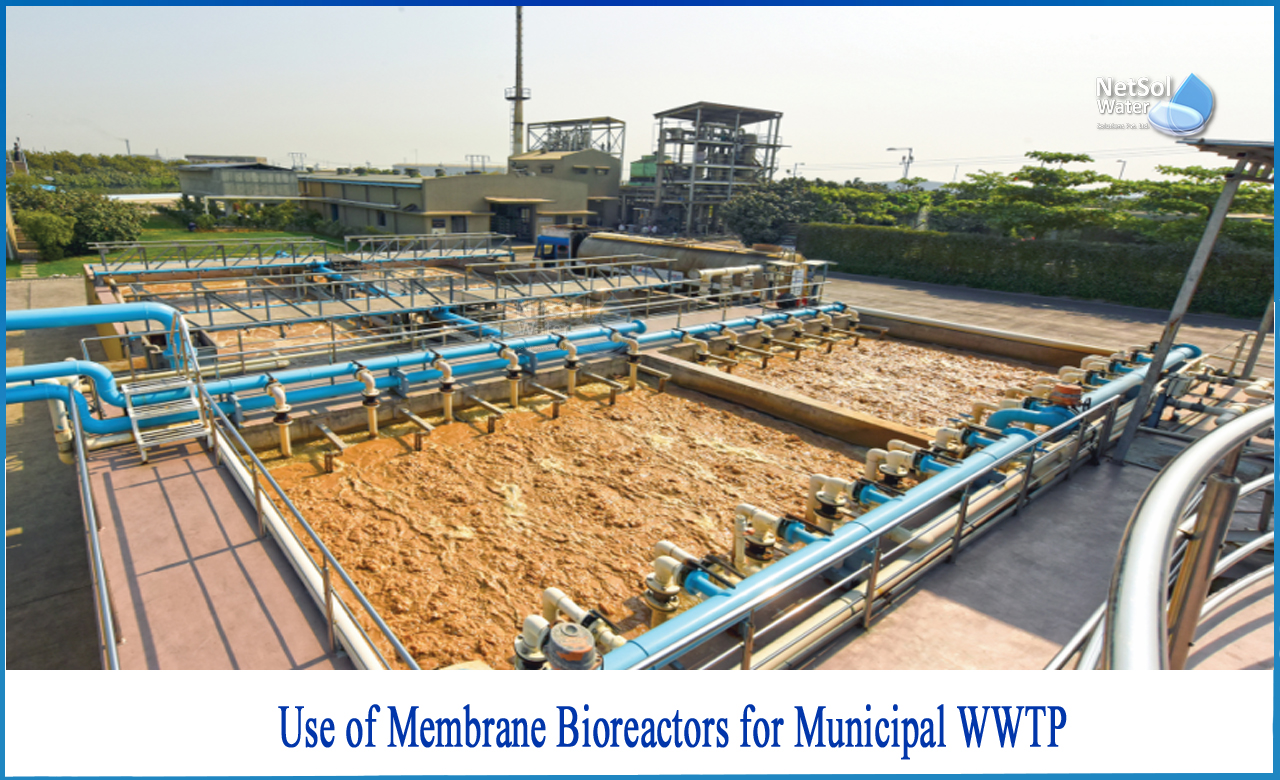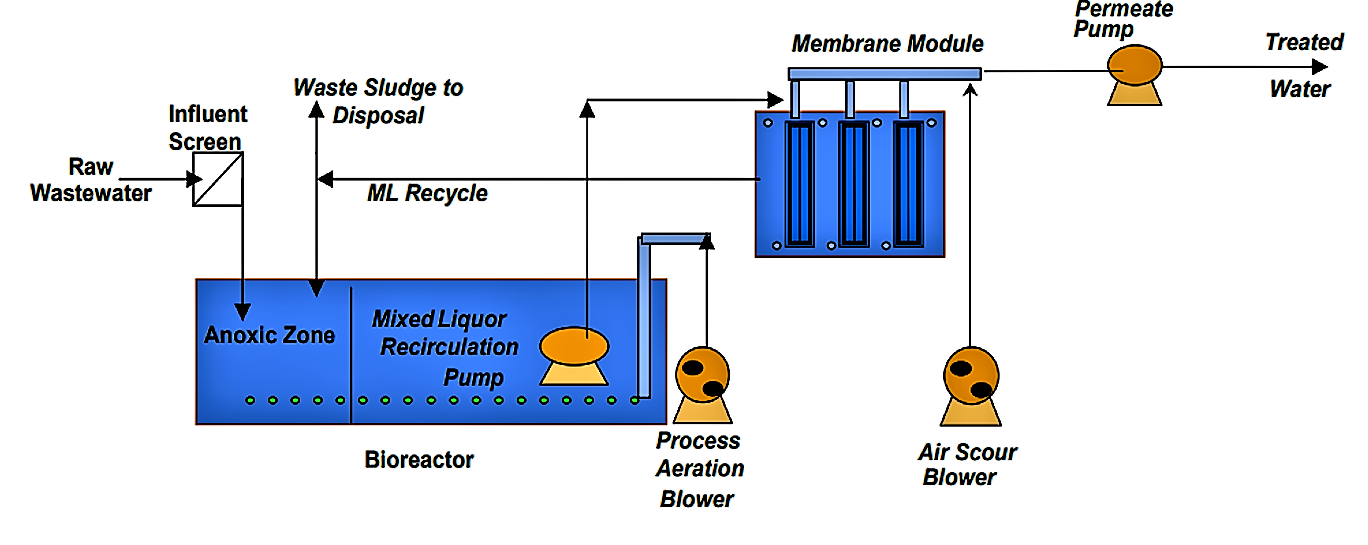Exploring the Benefits of Membrane Bioreactor in Municipal Wastewater Plants
Exploring the Benefits of Membrane Bioreactor in Municipal Wastewater Plants
Blog Article
Membrane Layer Bioreactors Explained: Reliable Solutions for Clean Water
Membrane bioreactors (MBRs) have become an advanced service for addressing the pushing obstacles of wastewater treatment. By integrating biological processes with advanced membrane filtration, MBRs not just enhance the high quality of cured water however additionally lower the spatial needs of therapy facilities. As ecological worries magnify, the function of MBR modern technology in advertising lasting water management comes to be significantly substantial. The complexities of their operation, advantages, and possible applications merit a closer evaluation to totally comprehend their influence on the future of water therapy.

What Are Membrane Layer Bioreactors?
Membrane layer bioreactors (MBRs) are sophisticated wastewater therapy systems that incorporate organic deterioration processes with membrane filtering technology. This combination allows for the reliable elimination of pollutants from water, making MBRs a recommended option in various applications, consisting of metropolitan wastewater treatment and industrial effluent management.

Among the important benefits of MBRs is their ability to produce high-grade effluent, often appropriate for reuse in watering or commercial procedures. In addition, MBRs need a smaller sized footprint compared to conventional treatment systems, making them perfect for urban settings where space may be limited.
In addition, MBRs can successfully take care of differing influent loads and are less prone to the results of toxic shocks. These features add to their expanding appeal as a lasting remedy for resolving the enhancing demand for tidy water while lessening ecological impacts.
How Membrane Bioreactors Job
While the operation of membrane layer bioreactors (MBRs) might appear complicated, it essentially focuses on the harmony in between organic procedures and membrane filtration. MBRs integrate a biological treatment procedure, generally turned on sludge, with a membrane layer splitting up unit to treat wastewater effectively.
In an MBR system, wastewater is very first presented into a bioreactor where microorganisms deteriorate natural matter and other contaminants. The biological activity lowers the concentration of contaminants while promoting the development of biomass. Following this biological therapy, the mixed liquor goes through membrane filtration, which can be microfiltration or ultrafiltration, depending on the wanted effluent top quality.
The membranes serve as a physical barrier, permitting water and little solutes to pass while retaining suspended solids and bigger molecules. This allows the system to keep a high concentration of biomass within the reactor, boosting the therapy efficiency.
Furthermore, the continual separation of treated water from the biomass promotes a small layout and lessens the footprint of the therapy center. Overall, the mix of organic destruction and membrane purification in MBRs results in reliable and effective wastewater therapy, guaranteeing premium effluent appropriate for various applications.
Advantages of MBR Modern Technology
Among the essential benefits of membrane bioreactor (MBR) innovation is its ability to create premium effluent with a dramatically decreased impact compared to conventional wastewater treatment methods. MBR systems properly integrate biological therapy and membrane filtering, causing remarkable elimination of impurities, including suspended solids, microorganisms, and organic issue. This ability leads to effluent that frequently satisfies or exceeds rigorous governing standards for reuse and discharge.
Furthermore, MBR modern technology permits for higher biomass focus, which boosts the treatment efficiency and lowers the needed activator volume. This compact style is especially valuable in urban locations where space is limited. The functional versatility of MBR systems likewise implies they can adapt to differing influent qualities and circulation prices, making them ideal for a wide array of applications.
Moreover, the decreased sludge manufacturing related to MBR processes contributes to decrease operational and upkeep prices. The membrane layers act as a physical obstacle, decreasing the danger of obstructing and making it possible for longer functional durations between cleaning. Overall, the advantages of MBR innovation make it an appealing solution for lasting wastewater therapy, resolving both environmental worries and the need for efficient resource monitoring.
Applications of Membrane Layer Bioreactors
With their flexibility and performance, membrane layer bioreactors (MBRs) locate applications throughout numerous industries, including community wastewater therapy, industrial processes, and also water recovery. In community setups, MBRs offer a small option for dealing with wastewater, properly removing pollutants while all at once creating top quality effluent that satisfies stringent regulative criteria. This makes them especially appropriate for locations with minimal space.
In industrial applications, MBR modern technology is made use of for treating procedure water, especially in markets such as food and beverage, drugs, and petrochemicals. These markets gain from MBRs' capability to manage high natural loads and their performance in recuperating important sources from wastewater, such as nutrients and water.
Additionally, MBRs play a crucial duty in water reclamation efforts, making it possible for the reuse of treated wastewater for watering, commercial processes, or perhaps as safe and clean water after further treatment (Membrane Bioreactor). Their efficiency in eliminating virus and pollutants makes them a dependable selection for making certain water high quality in different reuse applications
Future of Water Therapy Solutions
The future of water therapy options is positioned for transformative advancements driven by technological advancement and raising ecological recognition. As international water deficiency becomes a pressing concern, brand-new methods, including membrane layer bioreactor (MBR) systems, are set to play a critical role in enhancing the efficiency and sustainability of water therapy processes.
Arising modern technologies such as fabricated knowledge and device knowing are expected to enhance therapy operations, permitting real-time monitoring and predictive maintenance. This will check it out enhance the general reliability and performance of water therapy centers. Furthermore, advancements in membrane layer products, such as graphene and nanofiltration, promise to increase permeation prices and reduce fouling, bring about reduced power intake and operational expenses.
Additionally, the integration of renewable energy sources into water therapy plants will certainly add to greener techniques. The round economy design will additionally acquire traction, motivating the recuperation of valuable sources from wastewater, such as nutrients and power.
Conclusion

Membrane layer bioreactors (MBRs) have emerged as an innovative remedy for resolving the pressing challenges of wastewater therapy. By incorporating biological processes with sophisticated membrane layer purification, MBRs not only boost the top quality of treated water but also reduce the spatial requirements of therapy facilities.One of the vital advantages click this link of membrane layer bioreactor (MBR) innovation is its ability to produce premium effluent with a dramatically decreased footprint contrasted to standard wastewater therapy approaches.With their versatility and performance, membrane bioreactors (MBRs) discover applications throughout different markets, including metropolitan wastewater treatment, industrial processes, and also water improvement.In verdict, membrane bioreactors stand for a substantial development in wastewater treatment technology, integrating biological procedures with efficient membrane filtration to create top notch effluent.
Report this page